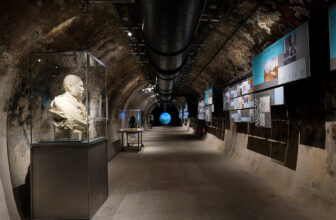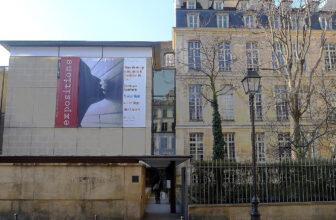
What Is the Musee Cluny Famous For?
Paris, a city renowned for its art, culture, and history, is home to an impressive array of museums. Among the most fascinating yet often overlooked is the Musée de Cluny, or the National Museum of the Middle Ages. Located in the heart of the Latin Quarter, this museum offers a journey through time, showcasing the art and daily life of the medieval era. But is it worth visiting? To answer that, let’s delve into the museum’s significance, what it’s famous for, and what visitors can expect.
What Is the Musée Cluny?
The Musée de Cluny is a unique museum dedicated to medieval art and history. Housed in the former Hôtel de Cluny, a 15th-century Gothic mansion, the museum also incorporates the remains of ancient Roman baths, creating a fusion of eras within its walls. It was established in 1843 and has since become one of the most important repositories of medieval artifacts in the world.
The museum’s collection spans a thousand years, from the fall of the Roman Empire to the dawn of the Renaissance, offering a comprehensive look at medieval Europe’s artistic and cultural evolution.
Why Is the Musée Cluny Famous?
1. The Lady and the Unicorn Tapestries
The museum’s crown jewel is undoubtedly the “La Dame à la Licorne” (The Lady and the Unicorn) tapestry series. These six tapestries, created around the end of the 15th century, are considered masterpieces of medieval art. Each piece is a stunning example of millefleurs (thousand flowers) design, depicting a lady, a unicorn, and other animals in various symbolic scenes.
The tapestries are thought to represent the five senses — taste, touch, smell, hearing, and sight — with the sixth tapestry, “À mon seul désir” (To my only desire), interpreted as a depiction of love or free will. Their vivid colors, intricate details, and enigmatic symbolism captivate visitors, making them a highlight of any visit.
2. Roman Baths
The museum’s location includes the ruins of the Thermes de Cluny, a Roman bath complex dating back to the 1st-2nd century AD. These ancient structures provide a rare glimpse into Roman life in Lutetia, the city that would become Paris. The frigidarium (cold room) is particularly well-preserved, with its soaring vaulted ceiling and intricate stonework offering a striking contrast to the Gothic architecture of the Hôtel de Cluny.
3. Extensive Medieval Collection
The Musée de Cluny’s collection is vast and varied, featuring:
- Stained Glass Panels: Exquisite examples of medieval stained glass from cathedrals across France.
- Sculptures: Including statues and reliefs from churches and cathedrals, many salvaged during the French Revolution.
- Illuminated Manuscripts: Beautifully decorated texts that showcase the artistry of medieval scribes.
- Ivory Carvings: Intricate works of art crafted from ivory, depicting religious and secular themes.
- Medieval Jewelry and Textiles: Offering insight into the craftsmanship and fashion of the time.
4. Architectural Beauty
The Hôtel de Cluny itself is a work of art. This Gothic mansion, built in the late 15th century for the abbots of Cluny, features elaborate stone carvings, arched windows, and a peaceful garden. The juxtaposition of the medieval mansion and the Roman ruins adds a layer of historical depth that few museums can match.
Is It Worth Visiting the Musée Cluny?
1. For Art and History Enthusiasts
If you have an interest in art, history, or medieval culture, the Musée Cluny is a must-visit. Its collection provides a rich narrative of medieval life, from religious practices to everyday objects. The Lady and the Unicorn tapestries alone are worth the visit, offering an unparalleled glimpse into the artistry and symbolism of the time.
2. For Architecture Lovers
The museum’s setting is a treasure in itself. The blend of Roman ruins and Gothic architecture makes it a unique site that tells the story of Paris’s transformation over centuries.
3. For a Quiet Cultural Experience
Unlike the Louvre or the Musée d’Orsay, the Musée Cluny is less crowded, offering a more intimate experience. You can take your time to appreciate the exhibits without the hustle and bustle of larger museums.
4. For Families
The museum’s engaging displays and storytelling elements make it an excellent choice for families with children. The tapestries and medieval artifacts spark curiosity and provide an educational experience in a captivating setting.
Practical Information for Visiting the Musée Cluny
Location
The Musée Cluny is located at 28 Rue du Sommerard, in the lively Latin Quarter. It’s easily accessible by metro, with the Cluny-La Sorbonne (Line 10) and Saint-Michel (Line 4) stations nearby.
Opening Hours
The museum is typically open from Tuesday to Sunday, 9:30 AM to 6:15 PM. It’s closed on Mondays and certain holidays. It’s always a good idea to check the official website for up-to-date information.
Ticket Prices
Admission prices are affordable, with discounts for students, seniors, and groups. Entry is free for EU residents under 26 and for all visitors on the first Sunday of the month.
Best Time to Visit
To enjoy a quieter experience, visit during weekdays and avoid peak tourist seasons. The museum’s manageable size means you can explore it thoroughly in two to three hours.
Nearby Attractions
The Musée Cluny’s location in the Latin Quarter places it near several other iconic Parisian landmarks:
- Notre-Dame Cathedral: A 10-minute walk away, this Gothic masterpiece is a must-see.
- Sainte-Chapelle: Renowned for its stunning stained glass windows, it’s just a short stroll from the museum.
- Jardin du Luxembourg: Perfect for a relaxing break, this beautiful park is within walking distance.
- Pantheon: A neoclassical monument housing the remains of France’s notable figures.
Tips for Visiting
- Plan Ahead: Check the museum’s website for special exhibitions or events.
- Take a Guided Tour: To fully appreciate the historical and artistic significance of the exhibits, consider a guided tour or an audio guide.
- Explore the Gardens: Don’t miss the medieval-inspired garden, a peaceful retreat in the bustling city.
- Combine with Nearby Sites: Make the most of your visit to the Latin Quarter by exploring nearby attractions.
- Photography: Photography without flash is allowed in most areas, so bring your camera to capture the intricate details.
The Musée Cluny is undoubtedly worth a visit, especially for those intrigued by the medieval period or seeking a unique cultural experience in Paris. Its exceptional collection, historic setting, and the allure of the Lady and the Unicorn tapestries make it a standout destination. Whether you’re an art lover, history enthusiast, or simply curious about Paris’s rich heritage, the Musée Cluny offers an unforgettable journey into the Middle Ages. image/wikimedia




